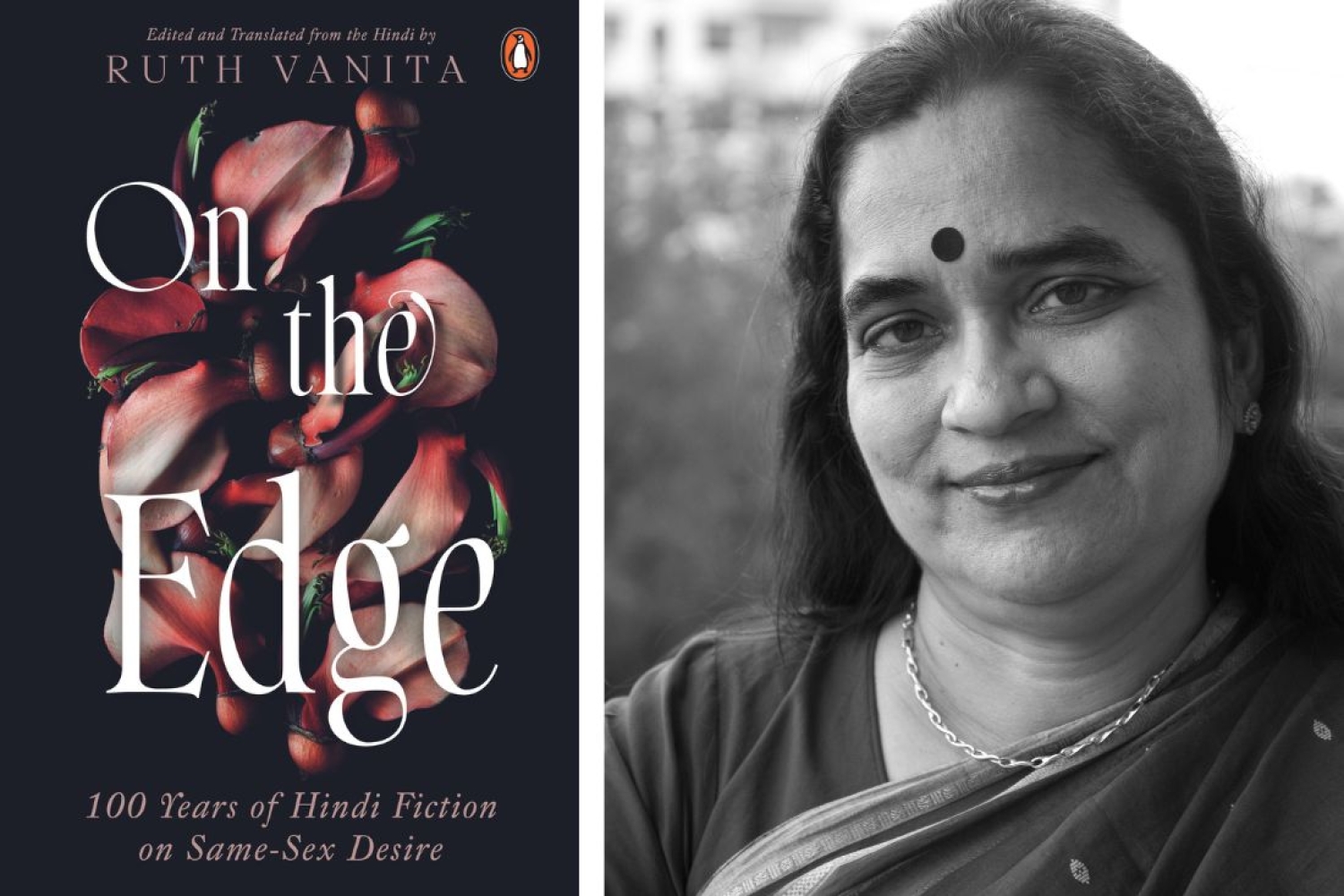

On the Edge is a first-of-its-kind collection of short stories and extracts from novels centered on themes of same-sex desire, translated from the original Hindi. The sixteen beautiful and provocative stories featured here (published between 1927 and 2022) include classic works by Asha Sahay, Premchand, Ugra, Rajkamal Chaudhuri, Geetanjali Shree, Sara Rai and Rajendra Yadav, among others. An important anthology, On the Edge shifts the focus on stories and characters who have, for far too long, remained in the shadows and brings them (and us) into the light. We’re in conversation with Ruth Vanita, on all things related to translation, fiction and writing.
There are many thematic concerns at play in the book, ranging from sexual desires, attraction to love and attachment in same-sex relationships. What, for you, is the main driving force behind this book?
I have subtitled it: ‘100 Years of Hindi Fiction on Same-Sex Desire’. That is because some stories, such as Ugra’s and Shobhna Siddique’s, are about desire. Other stories, such as Detha’s and Geetanjali Shree’s, are about love. In yet others, such as Sara Rai’s, Rajendra Yadav’s, and Akanksha Pare’s, one character loves another while the other character’s feelings seem more like temporary desire. But in all the stories, there is an element of desire, which makes the relationship more than a friendship.
What do you wish for your readers to take away from this book?
The knowledge that Hindi literature has been engaged with the idea of same-sex relationships for a long time. This is not a new or fashionable idea coming from the LGBT movement or from the West. Major writers, such as Rajkamal Chaudhari and Surendra Varma, as well as less-known ones, such as Asha Sahay, and young ones writing today, have approached the experience of same-sex desire from widely different perspectives.
Give us some insight into your process of translation from Hindi to English.
I try to stay true to the original while providing the English readers with a smooth and pleasurable reading experience. I use Hindi words such as Arey or dhoti only when absolutely necessary. For a few untranslatable idioms like tumhein meri qasam, I substitute other words but provide the original in a footnote. The original Hindi stories do something similar. They use English words like sex, gentleman, corridor, which cannot be easily translated into Hindi.
Do you think the language of desire feels more natural and comfortable in Hindi? How have you maintained the authenticity of the original text?
Much of the language of desire is similar, for example, metaphors of fire, intoxication, perfume, are used in both languages, and also descriptions of embracing, kissing, biting. There are certain idioms in Hindi which cannot be literally translated into English, for example, baat karna is an idiom for sexual intimacy in the Hindi heartland. The word ‘conversation’ used to have a similar meaning in English but it has lost that meaning. So I translate baatein karna as ‘talk to’ and explain the double meaning in a footnote.
Why do you think translation is important in the literary landscape of India today?
Translation into English is important because many Indians do not read Hindi. Also, there are many bilingual Indians who can read Hindi but are more comfortable reading English. In the case of this book, Hindi readers are not likely to find all these stories on this theme, on their own, so it will be convenient for those Hindi readers who also read English to read the stories here.
What were some challenges you faced while compiling this book?
I had trouble locating the forgotten 1947 novel Ekakini by Asha Sahay. This novel is about a passionate relationship between two women. I asked many Hindi writers, including the son of the eminent critic, Acharya Shivpujan Sahay, who had written the preface to the novel, but none of them could track it down. I also searched many libraries. Finally, I did find the book and translated parts of it. After that, I discovered that it had just come back into print in Hindi! I had lost my copy of Shobhna Siddique’s story and had been searching for the original for over a decade. I asked many of her contemporaries (she died young, in 1974) and scanned libraries but was unsuccessful. Finally, when I was working on this book, I found it.
What do you have planned for the future?
My second novel, A Slight Angle, will appear from Penguin next year and my book on Shakespeare from Primus Books. I am now translating the famous Hindi writer Mahadevi Varma’s sketches of people she knew, mostly people from lower-income groups. Harper Collins will publish this book, Portraits from Memory, in 2025. I have already translated Mera Parivar, her stories about her animal companions (including peacocks, an aggressive rabbit, dogs, a squirrel, and a deer) and Penguin has published this book as My Family.
Words Neeraja Srinivasan
Date 08.09.2023